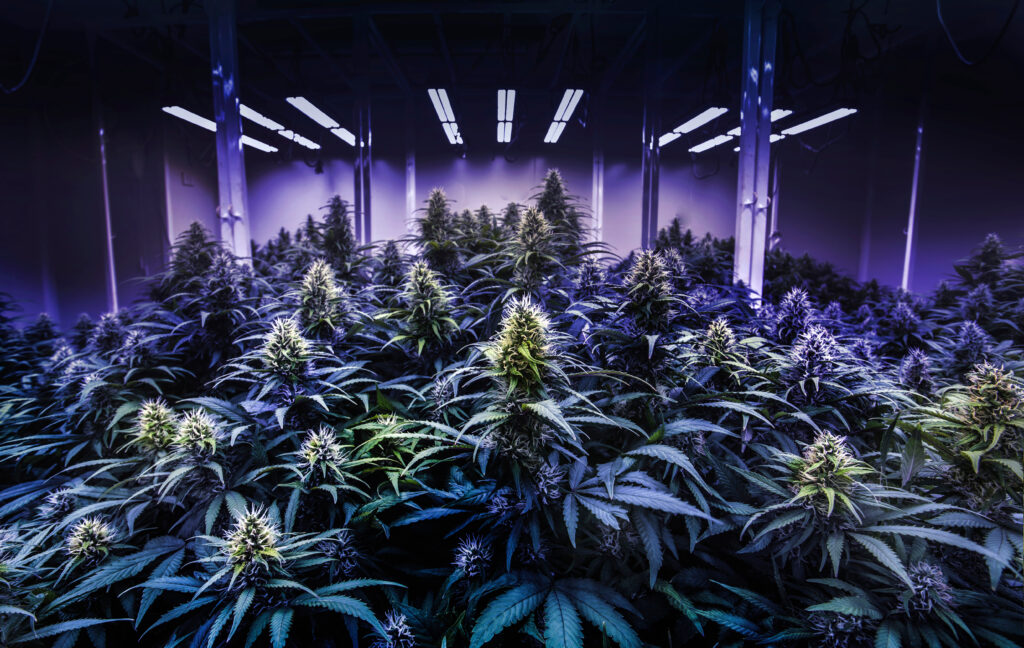
Features
Cultivation
Production
Research
Lighting certifications, testing and ratings: What does it all mean?
Understanding safety certifications, quality standards & rating, and third party verification testing for an efficient cannabis operation.
January 13, 2023 By Jonathan Fernandes
 Photo: Adobe Stock
Photo: Adobe Stock In our last article, we briefly touched on the topic of certifications, testing and ratings – but what does it really mean? Why are these details important for cultivators to understand?
Certifications, testing and ratings of lighting fixtures help growers to plan and design their cultivation spaces and measure power while learning its capabilities in a grow environment. Lighting information should be frequently recorded and be part of a routine environmental data collection.
So, before commencing operations, a comprehensive lighting strategy is required.
Knowing and trusting the sources of a fixture’s specifications becomes imperative when planning ahead, and is the reason why cultivators review certifications, testing and ratings.
Safety certifications
Whether they are double ended, high pressure sodium fixtures or LEDs, lighting fixtures should bear the mark of an electrical safety standard. In North America, we look to Underwriters Laboratory (UL), Intertek (ETL), and in Canada, the Canadian Standards Association (CSA), as organizations that administer safety certifications. While they are different organizations, they all adopt the same electrical safety codes and international standards for electronic equipment development.
From a safety certification perspective, these codes are interchangeable because the organizations are all part of the Nationally Recognized Testing Laboratories (NTRLs) recognized by the Occupational Safety & Health Administration (OSHA).
NRTLs ensure that the manufacturing and fixtures comply with standards associated with electrical lighting. In addition to safety codes, international standards for equipment design are developed in part with the international electrotechnical commission. Their website describes them as being the organization to ensure the performance, reliability, efficiency and safety of electrical and electronic systems and devices; they provide standard understanding and terminology that experts can use when developing technology.
These organizations set up the specifications and testing protocols to ensure fixtures conform to electrical safety, but what specific details do they provide about a lighting fixture?
These entities help to accurately quantify the electrical input and output power, including watts, amperage and voltage required to operate the fixture at optimal capacity. They can provide specifications on the operational frequency, the output of photosynthetically active radiation (PAR) and a fixture’s efficacy for converting energy into light.
Additionally, they can provide information on optimal operating temperatures and specific physical characteristics of a unit. They ensure the product will last and will be safe for the intended use. Recognizing the marks of these safety organizations means you can trust the specifications reported.
If the electrical specifications are trusted and accurate, engineers and electricians can use this information to plan out the capacity and infrastructure of a grow space. This will lead to an effective and efficient use of electricity if designed appropriately.
If this information is not known, there may be a situation where the infrastructure might not be able to keep up with the demands of the equipment used to cultivate, hindering the success of the grow.
Quality standards & ratings
There are also other quality standards found in the manufacturing process and types of protection ratings that are useful in specific scenarios.
For example, say there is a grow space in which a cultivator wants to implement lighting fixtures but the space often gets dusty and retains a lot of moisture. One would then examine the ingress protection (IP) rating to understand if its manufactured appropriately to avoid penetration of dust or moisture. The higher the IP rating, the greater the protection.
Other quality standards such as the International Organization for Standardization (ISO) or Restriction of Hazardous Substances (RoHS), are manufacturing standards that can describe the operating procedures for how a product was made or the types of materials used as components.
These standards are helpful in knowing the quality of the build and the potential for equipment to pose a hazard risk based on the materials used to construct it. And these ratings and other standards help inform growers about the special requirements for the fixtures and information on the manufacturing of product they are purchasing.
Third party verification testing
There are many third-party organizations including non-profit organizations that perform verification testing to ensure manufacturers’ specifications are accurate and reliable. The same safety accreditation organizations recognized by NRTLs can perform third party verification testing.
There are also reliable non-profit organizations specifically engaged in the lighting sector, such as the design light consortium (DLC), that partner with industry leaders and other organizations to promote and improve lighting efficiency. They verify the efficiency of a fixture and then publish the details of the product by category. For example, they have a category and verification standards specifically for horticultural lighting.
How do these help cultivators?
Additional verifications tests and ratings can assist in obtaining electrical rebates for lighting efficiency because they are independently verified.
LPs save money on electrical lighting costs by using more efficient fixtures and also have the ability to receive cash back for eligible incentives. Some insurance companies also offer discounts or reduce premiums if you use certified and tested fixtures, helping to reduce your overall cultivation costs.
While this is not a comprehensive list of all the possible certifications, testing marks and ratings for lighting fixtures, it does provide a snapshot of the major standards in the Canadian marketplace.
Founder and President of Green Amber Canada, Jonathan Fernandes is a cannabis creator experienced in farming, extraction, education and equipment design. With over 20 years in the Canadian legacy market, he aims to educate and support consumer needs. Prior to working in cannabis, Jonathan worked with the Ontario government. His experience in enforcement, policy and legislation development makes him a driving force for the evolving cannabis regulations. Currently he spends his time researching and developing cannabis lighting technology.
Print this page